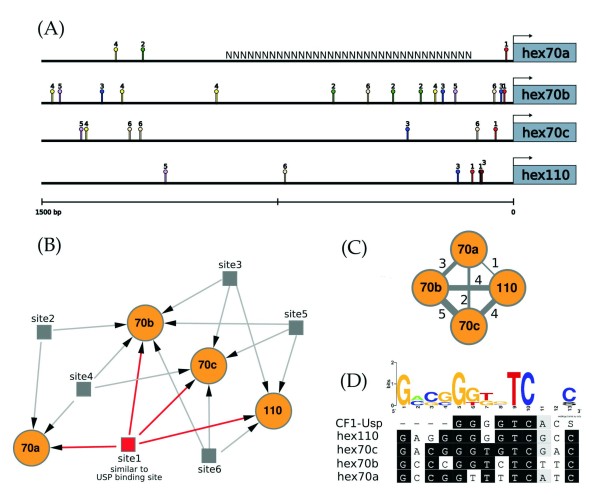Figure 2.
Overrepresented motifs in the upstream control regions of the hexamerin genes. (A) Spatial distribution of the six overrepresented DNA motifs in the 1.5 kb-long upstream control regions (UCRs) of the four honey bee hexamerin genes. Motif sequences are specified in Table 2. The N series in the hex 70a UCR indicates that this DNA region is still undefined in the honey bee genome. (B) Putative co-regulatory network showing the relationship between the six overrepresented motifs and hexamerin genes (orange circles). The site 1 motif (red square) is similar to the Usp binding element (also named CF1) in D. melanogaster. Sites 2 to 6 (grey squares) are not similar to any of the D. melanogaster binding site sequences described in the TRANSFAC database, and may be specific to hexamerin genes; (C) Based on the co-regulatory network, a scheme was constructed using the number of sites shared among hexamerin gene UCRs. The thickness of the bars linking hexamerin genes (orange circles) is directly proportional to the quantity of putative co-regulatory sites (the number of sites is indicated) shared by the four genes. (D) Alignment of the target sites similar to CF1-Usp found in the 5' UCR of honey bee hexamerin genes. The graph shows the sequence conservation at each position while the height of symbols indicates the relative frequency of each nucleotide at that position.

